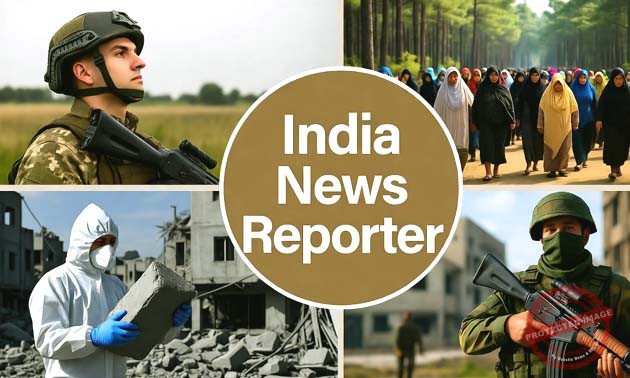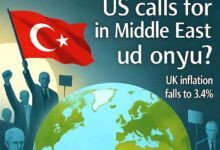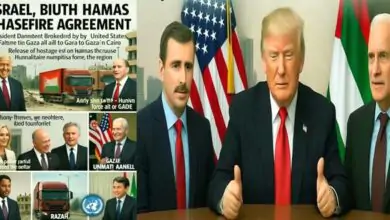
Global Tensions Escalate (India News Reporter): In a world still reeling from the aftershocks of prolonged conflicts and geopolitical maneuvering October 8, 2025 dawned with a series of stark reminders of humanity’s fragile peace. From the frozen battlefields of Eastern Europe to the rubble-strewn streets of the Middle East, today’s headlines underscore the unrelenting grind of war, the faint glimmers of diplomacy, and the profound human cost that accompanies them.
As nations grapple with resource strains and shifting alliances, these events not only reshape regional dynamics but also pose urgent questions for global stability. For readers in India and beyond, where energy security and migration pressures intersect with these crises, the implications are far-reaching.
Russia’s Shadowy Onslaught in Ukraine: Territorial Gains and Economic Warfare
The Ukraine-Russia conflict, now entering its fourth grueling year, saw a chilling update from Moscow that has sent ripples through NATO capitals and energy markets worldwide. Russian President Vladimir Putin, in a televised address late on October 7, boasted that his forces had seized nearly 5,000 square kilometers (approximately 1,930 square miles) of Ukrainian territory so far in 2025 alone. This advance, he claimed, demonstrates Moscow’s ‘complete strategic initiative’ on the battlefield, a narrative that starkly contrasts with Kyiv’s reports of fierce resistance and mounting casualties.
Independent verification from satellite imagery and frontline dispatches paints a more nuanced picture: Russian troops, bolstered by North Korean-supplied munitions and Iranian drones, have made incremental pushes in the Donetsk and Kharkiv regions. However, these gains come at a staggering cost estimates from the Ukrainian General Staff suggest over 600,000 Russian casualties since the invasion began in February 2022. Putin’s remarks, delivered amid a backdrop of economic sanctions that have isolated Russia further, appear aimed at bolstering domestic morale as winter approaches, with fuel shortages looming for both sides.
Adding a layer of insidious complexity, Ukrainian President Volodymyr Zelensky accused Russia of weaponizing its notorious ‘shadow fleet’ a clandestine armada of aging tankers evading Western sanctions to fund the war and sow chaos in Europe. These vessels, often uninsured and flagged in obscure jurisdictions, transport sanctioned oil to buyers in Asia, including India, generating billions in illicit revenue. Zelensky’s stark warning during a virtual briefing with EU leaders: ‘The Russians must know that none of their destructive actions all the vile things they do will go unanswered by the world.’ In response, the European Union announced plans to expand sanctions on 15 additional shadow fleet ships, potentially disrupting global oil flows and driving up prices that Indian consumers are all too familiar with.
British RAF patrols over Poland, as reported by embedded journalists, highlight NATO’s heightened vigilance along its eastern flank. World affairs editor Sam Kiley, flying on one such mission, described the scene as ‘a war without end,’ with radar screens flickering with unidentified drone signatures. For India, which has navigated a delicate balance in its relations with both Moscow and Kyiv, these developments raise concerns over wheat imports and defense ties Russia remains a key supplier of discounted oil, even as New Delhi champions multilateral peace talks.
Gaza’s Grim Milestone: Two Years of Devastation and a Flicker of Ceasefire Hope
Half a world away, the Gaza Strip marked a somber anniversary on October 7, exactly two years since the Hamas-led assault on southern Israel that ignited one of the 21st century’s most devastating humanitarian crises. Israelis gathered in kibbutzim and Tel Aviv for vigils honoring the 1,200 lives lost and the 251 hostages taken in that brutal dawn raid, their chants of ‘Bring them home’ echoing against a skyline scarred by ongoing rocket fire. Families of victims shared raw testimonies, with one mother recounting the ‘endless nights’ of uncertainty, underscoring a national trauma that has unified a divided society.
Yet, for Palestinians in Gaza, the day evoked a far graver ledger of loss. According to the Gaza Health Ministry, Israel’s retaliatory campaign has claimed over 67,000 lives—more than 10% of the enclave’s pre-war population and wounded another 170,000. Satellite analysis from the UN’s UNOSAT program, updated as of July 8, 2025, reveals that nearly 78% of all structures in Gaza lie in ruins, with direct physical damage estimated at a staggering $55 billion by the World Bank. Hospitals, schools, and water infrastructure have been systematically targeted, with over 790 attacks on health facilities documented by the World Health Organization since October 2023 acts that legal experts, including a UN commission of inquiry, have labeled as potential war crimes under the Geneva Conventions and Rome Statute.
Famine stalks the survivors: At least 460 have perished from starvation, and the Integrated Food Security Phase Classification (IPC) warns of full-scale famine in northern Gaza due to Israel’s blockade on aid. Displaced families, 62% of whom lack property documents, face permanent exile, their homes reduced to ‘killing fields’ as described by Israeli soldiers in leaked Haaretz reports. Pro-Palestinian protests surged globally on October 7, from Jakarta’s Gen Z rallies waving anime-inspired flags to marches in London and New York, demanding an end to what human rights groups and genocide scholars decry as a deliberate campaign of erasure.
Amid this despair, a tentative diplomatic breakthrough emerged. Hamas, in a statement to Al Qahera News TV, signaled readiness for a ceasefire based on a framework proposed by U.S. President Donald Trump, provided it includes ironclad guarantees against future incursions. Senior Hamas leader Khalil Al-Hayya emphasized ‘serious and responsible negotiations’ during talks in Egypt’s Sharm el-Sheikh resort, joined by Qatar’s prime minister and U.S. mediators. Smoke from fresh Israeli shelling rose over Gaza even as envoys convened, a poignant reminder of the chasm between rhetoric and reality. For India, which has called for a two-state solution and increased UNRWA funding, this could ease regional tensions affecting West Asian trade routes vital to its economy.
Syria’s Fragile Truce: Ceasefire in Aleppo Signals Broader De-escalation?
In a rare note of restraint, Syria’s war-weary factions in Aleppo reached a ceasefire agreement on October 7, halting clashes between the Syrian Arab Army and U.S.-backed Syrian Democratic Forces (SDF) in two key districts. State news agency SANA reported the deal as a ‘vital step toward stability,’ following a surge in artillery exchanges that displaced hundreds and threatened to unravel fragile U.S.-Russia understandings in the region.
The truce, brokered amid heightened U.S. patrols along the Euphrates, comes as Syrian President Ahmed al-Shara prepares for an Arab-Russian summit in Moscow on October 15. Discussions there may focus on bolstering Syrian military capabilities, including artillery and armor training with Russian advisors observed in Damascus on October 2. Parallel talks between Lebanese and Syrian officials in Beirut addressed border demarcation, detainee swaps, and a judicial cooperation pact efforts to untangle decades of cross-border strife.
Yet, optimism is tempered: Over 8,000 displaced Syrians in makeshift camps endure ‘famine-like’ food insecurity, per UN reports, with the World Food Programme slashing rations due to funding shortfalls. For India, which hosts a significant Syrian diaspora and has extended humanitarian aid, this ceasefire could stabilize migration flows and oil transit through the Mediterranean.
A World at the Brink: Pathways to Peace?
As October 8 unfolds, these interconnected crises from Putin’s territorial bravado to Gaza’s anniversary anguish and Syria’s halting truce paint a portrait of a global order fraying at the edges. Economic fallout looms large: Disrupted energy supplies could spike Brent crude above $90 per barrel, while refugee surges strain borders from Poland to Jordan. International bodies like the UN and EU urge renewed multilateralism, but with U.S. elections looming and China’s shadow influence growing, the onus falls on middle powers like India to amplify calls for dialogue.
In the words of UN Secretary-General António Guterres, echoed in today’s briefings: ‘Peace is not a dream; it is a necessity.’ For now, though, the world holds its breath, waiting to see if today’s headlines herald escalation or the first steps toward resolution. Stay tuned to India News Reporter for ongoing coverage.








